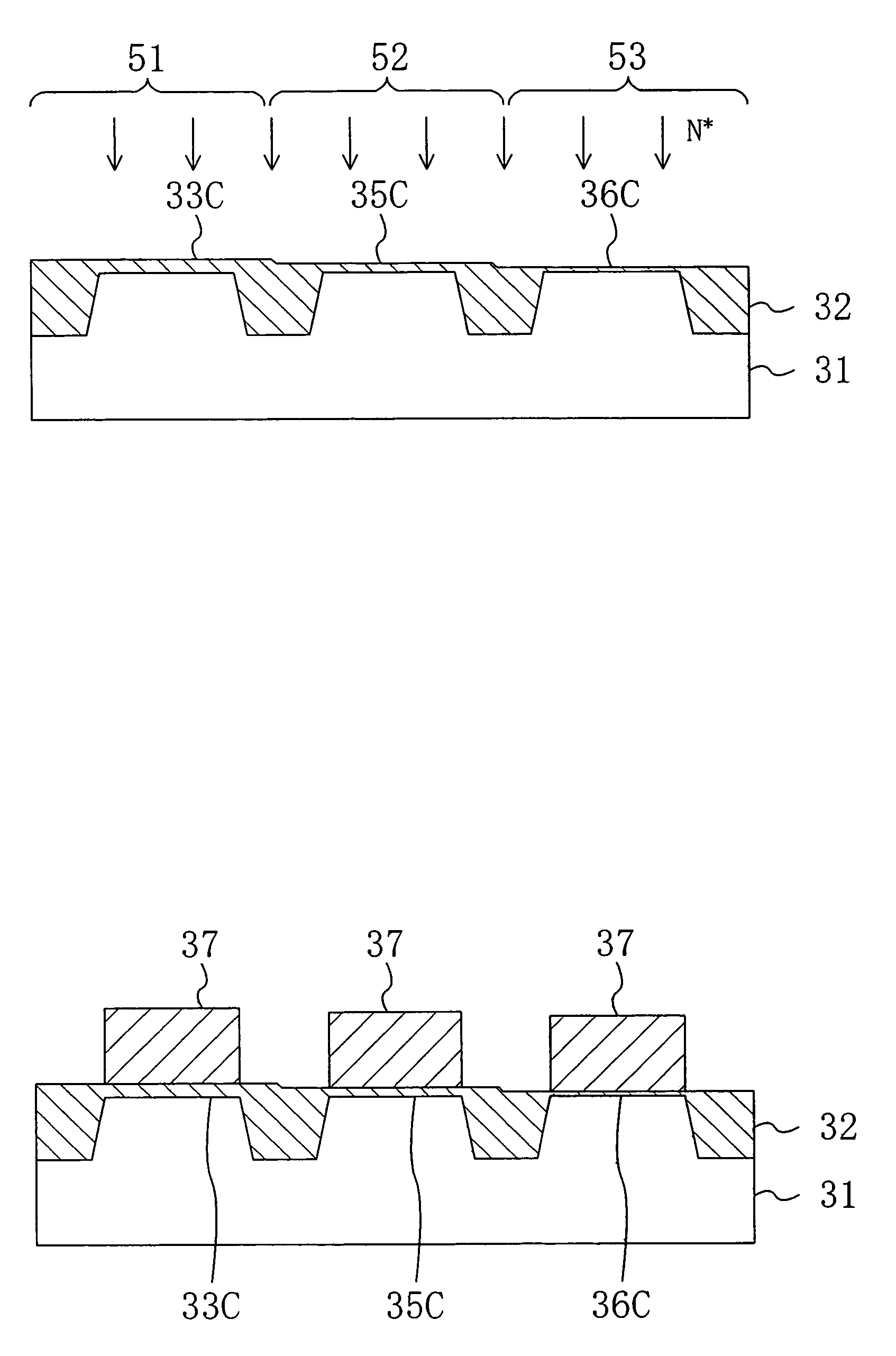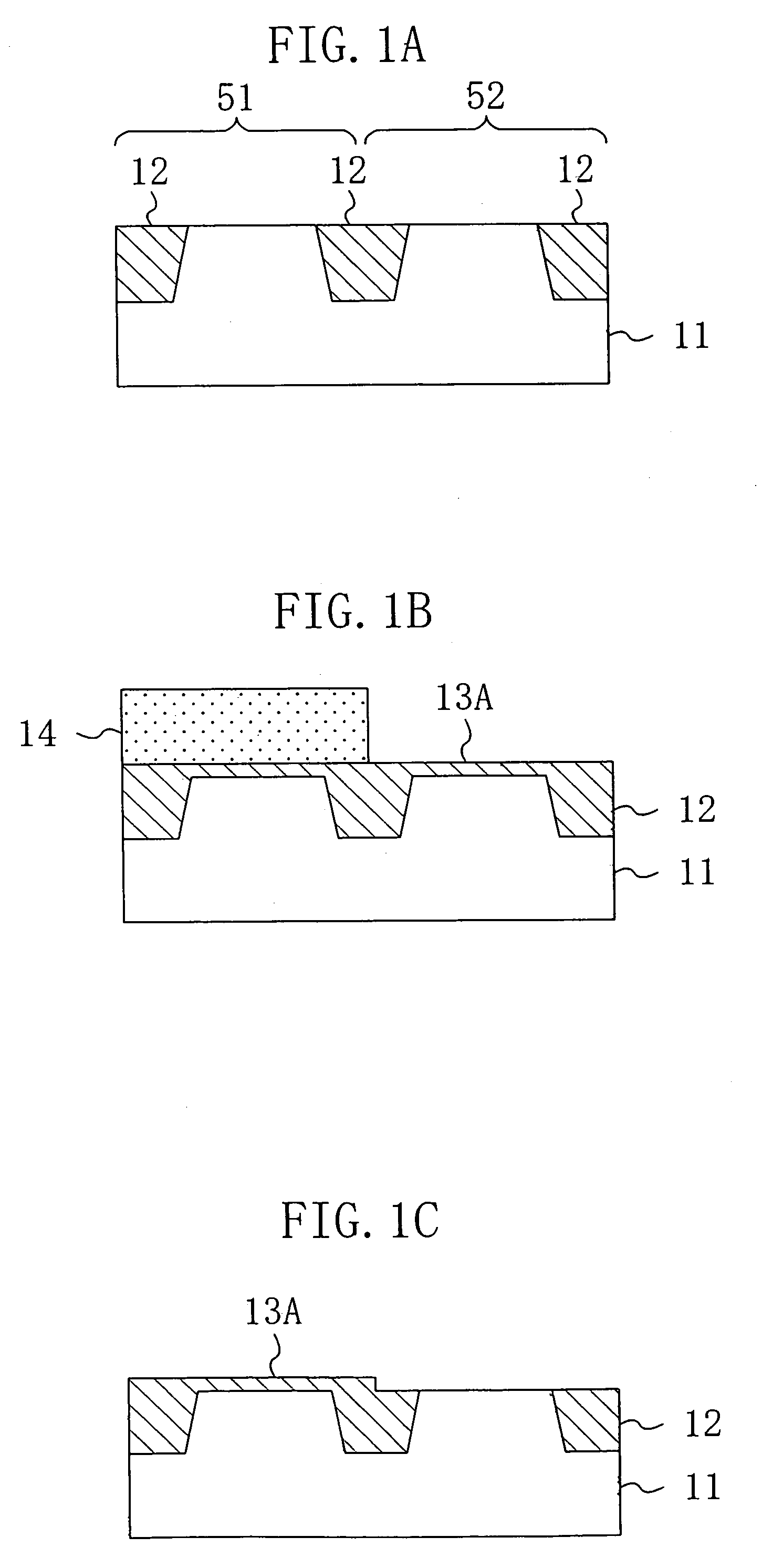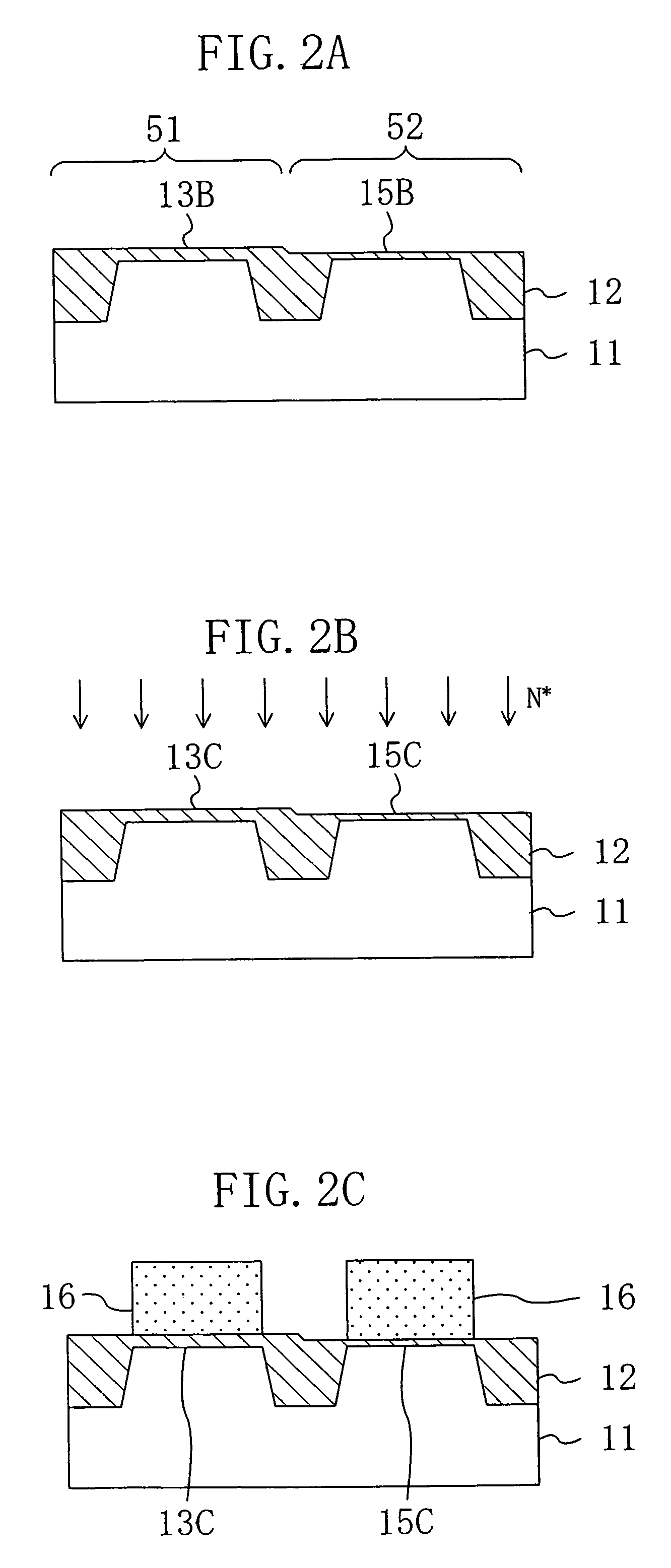Semiconductor device and method for manufacturing the same
- Summary
- Abstract
- Description
- Claims
- Application Information
AI Technical Summary
Benefits of technology
Problems solved by technology
Method used
Image
Examples
first embodiment
[0062]The first embodiment of the present invention will now be described with reference to the drawings.
[0063]FIG. 1A to FIG. 1C and FIG. 2A to FIG. 2C are cross-sectional views sequentially illustrating the steps of a method for manufacturing a semiconductor device according to the first embodiment of the present invention.
[0064]First, as illustrated in FIG. 1A, a semiconductor substrate 11 is prepared. For example, the semiconductor substrate 11 includes, in an upper portion thereof, an epitaxial layer (not shown) having a thickness of about 5 μm and made of P-type silicon whose specific resistance is about 11 Ωcm to 14 Ωcm, and the semiconductor substrate 11 has a specific resistance of about 0.01 Ωcm to 0.02 Ωcm. Then, a device isolation region 12, which is a shallow trench isolation, is formed in an upper portion of the semiconductor substrate 11. The device isolation region 12 partitions the principal surface of the semiconductor substrate 11 at least into a first device form...
second embodiment
[0097]The second embodiment of the present invention will now be described with reference to the drawings.
[0098]FIG. 8A to FIG. 8D are cross-sectional views sequentially illustrating the steps of a method for manufacturing a semiconductor device according to the second embodiment of the present invention.
[0099]First, a device isolation region 22, which is a shallow trench isolation, is formed in an upper portion of a semiconductor substrate 21 made of P-type silicon. The device isolation region 22 partitions at least the first device forming region 51 and the second device forming region 52 from each other. Then, although not shown, a P-type well region and an N-type well region are formed in an upper portion of the semiconductor substrate 21, and a channel doping process is performed for adjusting the threshold voltage of the transistor. Then, the surface of the semiconductor substrate 21, in which the device isolation region 22 has been formed, is subjected to an SCl cleaning proc...
third embodiment
[0109]The third embodiment of the present invention will now be described with reference to the drawings.
[0110]FIG. 10A to FIG. 10C, FIG. 11A and FIG. 11B are cross-sectional views sequentially illustrating the steps of a method for manufacturing a semiconductor device according to the third embodiment of the present invention.
[0111]First, a device isolation region 32, which is a shallow trench isolation, is formed in an upper portion of a semiconductor substrate 31 made of P-type silicon. The device isolation region 32 partitions at least the first device forming region 51, the second device forming region 52 and a third device forming region 53 from one another. Then, although not shown, a P-type well region and an N-type well region are formed in an upper portion of the semiconductor substrate 31, and a channel doping process is performed for adjusting the threshold voltage of the transistor. Then, the surface of the semiconductor substrate 31, in which the device isolation regio...
PUM
 Login to View More
Login to View More Abstract
Description
Claims
Application Information
 Login to View More
Login to View More - R&D
- Intellectual Property
- Life Sciences
- Materials
- Tech Scout
- Unparalleled Data Quality
- Higher Quality Content
- 60% Fewer Hallucinations
Browse by: Latest US Patents, China's latest patents, Technical Efficacy Thesaurus, Application Domain, Technology Topic, Popular Technical Reports.
© 2025 PatSnap. All rights reserved.Legal|Privacy policy|Modern Slavery Act Transparency Statement|Sitemap|About US| Contact US: help@patsnap.com



